As an Amazon Associate I earn from qualifying purchases.
I can’t remember exactly when I had my first Japanese seaweed salad, but I am pretty sure I ordered as some sort of gastronautic feat of bravado, thinking it would be slimy and fishy.
It isn’t. A little slippery, yes, but more like cold noodles than the outside of a salmon or a pike. And it was not fishy in the slightest. Not at all, which surprised me. Cool, crunchy and again a bit slippery, seaweed salad has more in common with, say, our familiar crunchy salads of cucumber, corn, tomatoes and red onion than it does with anything oceanic.
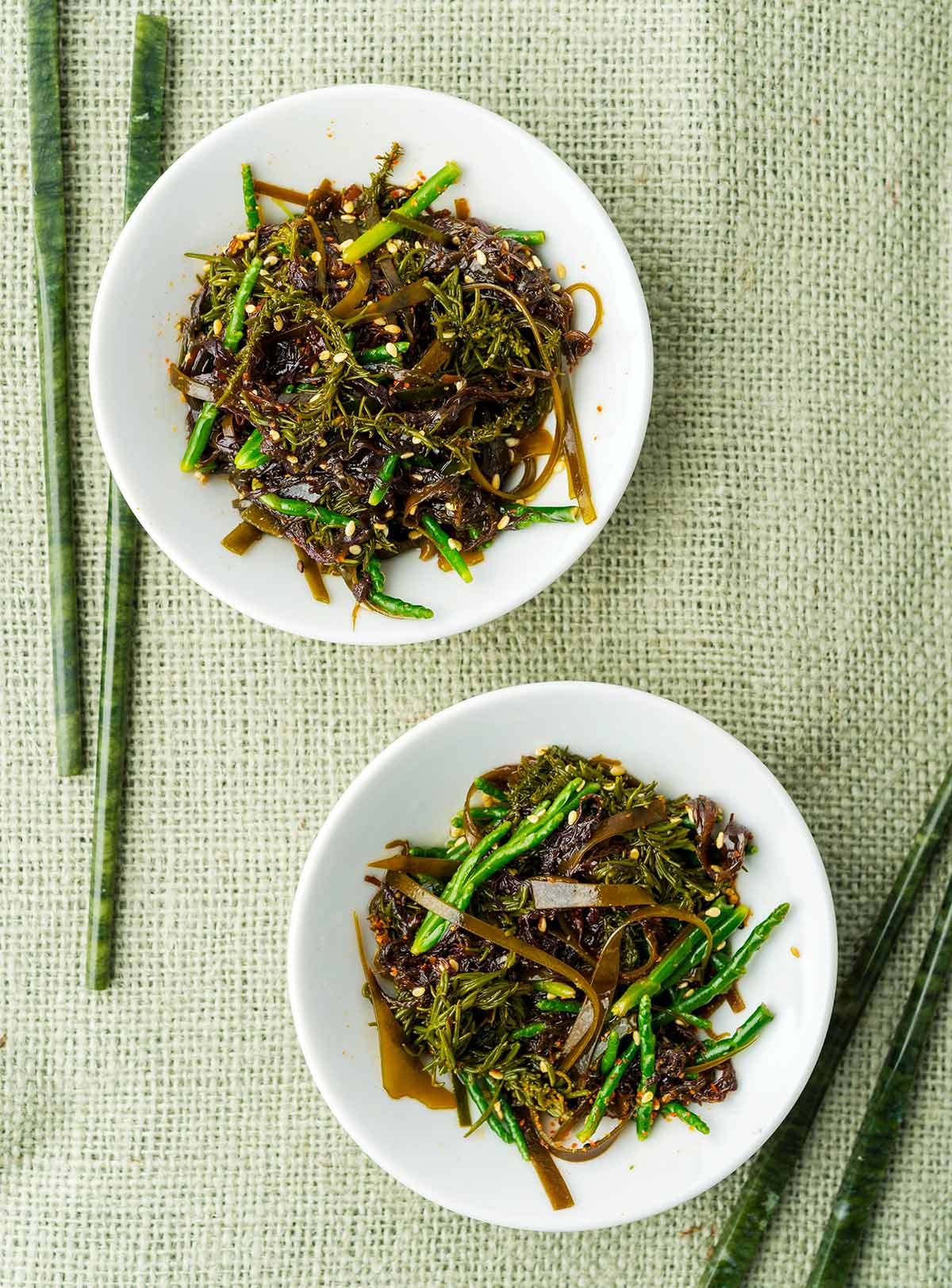
I now order Japanese seaweed salad whenever I get the chance. But could I make it myself?
Turns out the answer is a resounding yes. And here’s why: No North American seaweeds are toxic. Yep, some taste better than others, but none will hurt you. That gives a forager license to play. And so one morning I drove out to Bodega Bay at low tide to see what I could find.
I didn’t go into the rocks blind, however. I am a voracious reader of books, and I knew there had to be some good seaweed books out there. Turns out there are fewer than you might think, but I am particularly fond of the very idiosyncratic Sea Vegetables by Evelyn McConnaughey. It’s a low-budget book with some good line drawings and a lot of murky, black-and-white images, but it gives you the basics and it’s a fun read, of only for the bizarre hippy recipes like “alaria soyfood delight.”
So, armed with this book, I went seaweeding. First thing I was looking for was kelp. Not bullwhip kelp, mind you, but a Laminaria, or kombu kelp.
One of the things you need to get used to with seaweed is that lots of them don’t have common names. This one might be Laminaria saccharina, but more likely it’s a young L. longicrurus — not that you need to care. They’re all edible, and great in a salad sliced very thin.
Most Japanese seaweed salads are made primarily of wakame seaweed, which is not native to the United States, but it is here as an invasive species in the Bay Area and Southern California.
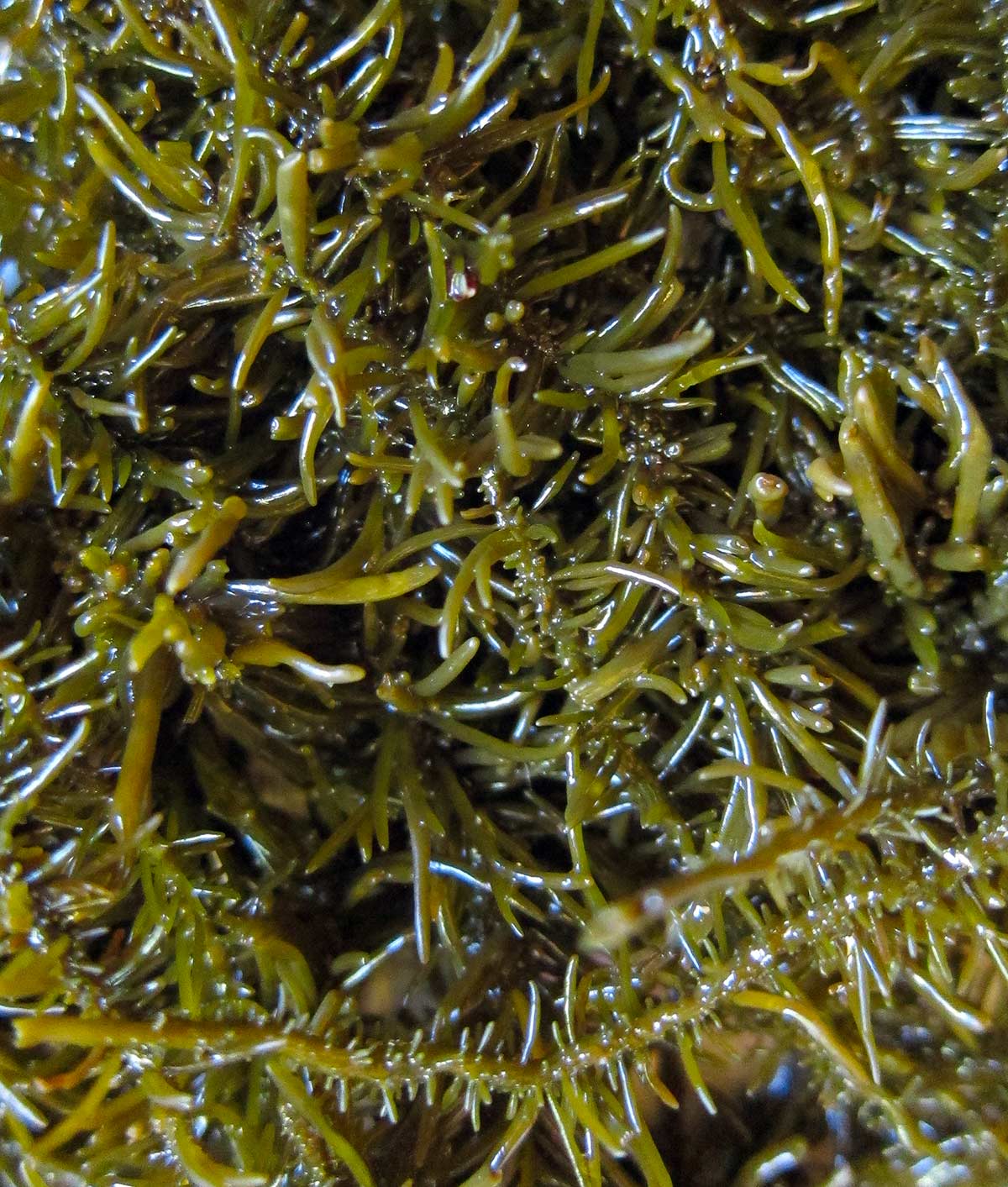
Also on my hit list were fir needle seaweed, Analipus japonicus, which looks like fir needles, as well as a seaweed that looks like red mermaid’s hair, which is a Gracilaria species. Why these? They’re delicate, pretty to look at and McConnaughey says they’re good in salads.
It was a bonanza. I found almost every kind of seaweed Evelyn mentions in the book. Most I dried. Some I pickled. These I ate fresh.
Keep in mind where I collected seaweed it was open to the Pacific Ocean and very clean. I would not recommend picking seaweed in back bays, which can be polluted.
You should also know that by law in most states you must use scissors or a knife to snip off the seaweed, leaving the “holdfast” that attaches the seaweed to the rock; doing this will let the seaweed grow back. in California, your daily limit is 10 pounds, which is a lot of seaweed if you think about it…
Seaweed, being algae, tends to not keep very well. Thus the stink when it begins to rot. At best it will keep only a few days in the fridge without further preservation. After that it begins to get truly slimy and smelly. You can blanch your seaweed rather than eat it raw, and this will buy you a couple more days in the fridge.
Japanese seaweed salad needs to be simple. A little sesame oil and rice vinegar, a touch of shoyu (soy sauce), a bit of sugar.
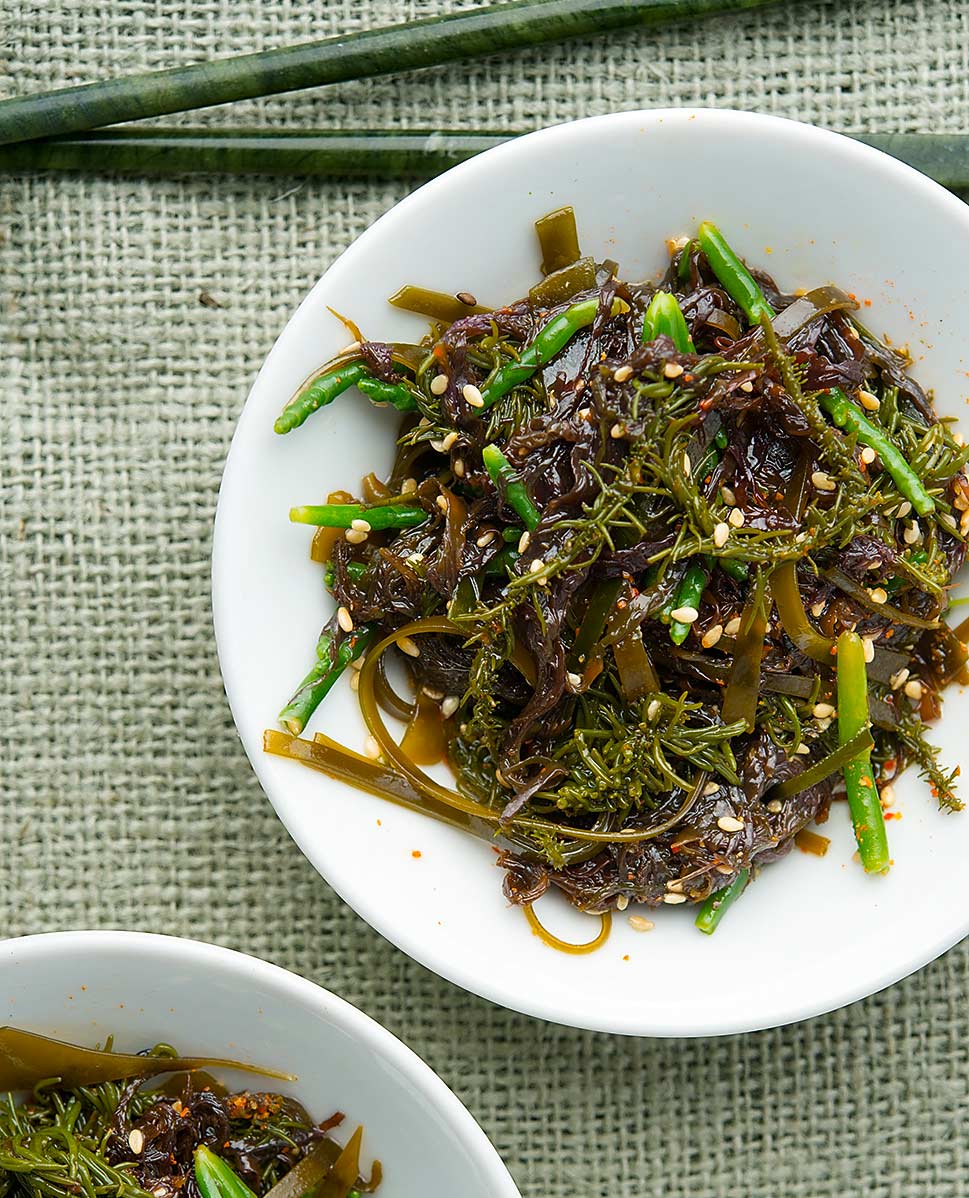
You will notice one ingredient in my Japanese seaweed salad that isn’t traditional: Sea beans, also known as samphire, glasswort or pickleweed. (You can read more about sea beans here.) I like the salty crunch of this vegetable, and it grows right near the seaweed, so it seemed like a natural.
When I finally brought everything for my seaweed salad together, I admit to a twinge of nervousness: Yeah, everyone says all seaweeds are edible, but what if I didn’t like this combination? Should I have just stuck with store-bought wakame?
If you do use wakame for your seaweed salad, you will most often find it dried. Rehydrate it in cool water for 10 minutes or so. You’ll need about 2 ounces dried. It expands a lot.
Seaweed Salad
Ingredients
- 1 pound various seaweeds (see below)
- 1/3 pound sea beans, salicornia, saltwort, pickleweed, glasswort, samphire (optional)
- 3 green onions, sliced thin (or chives)
- Toasted sesame seeds, for garnish
DRESSING
- 2 tablespoons rice wine vinegar
- 1 tablespoon sesame oil
- 1 tablespoon soy sauce
- 1 teaspoon sugar
Instructions
- To make the dressing, whisk all the ingredients together in a small bowl until the sugar dissolves.
- Get a large pot of water boiling. Boil the sea beans for 1 minute and then plunge into a bowl of ice water. Boil any seaweed you want to blanch (see post above) for 15 seconds, then plunge into the ice water. Pat the vegetables dry and put into a large bowl with any of the seaweeds you want to eat raw.
- Toss the salad with the dressing and chill. You want to eat this salad very cold. When you are ready to serve, mix in the green onions and sprinkle sesame seeds on top.
Notes
Nutrition
Nutrition information is automatically calculated, so should only be used as an approximation.
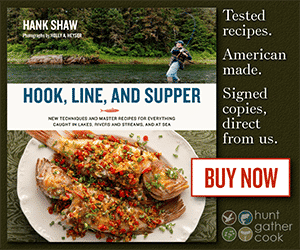
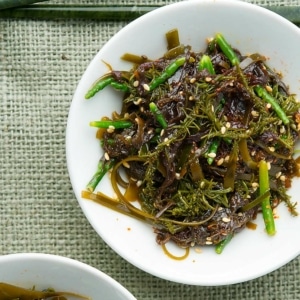

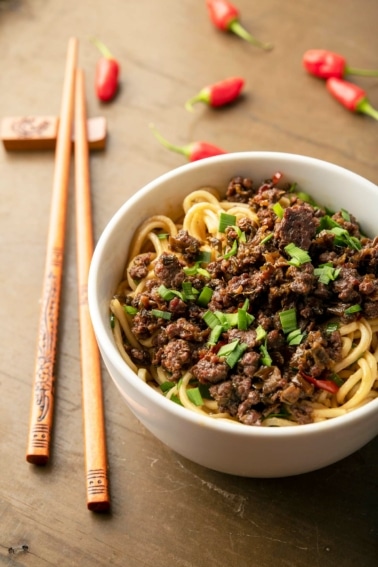
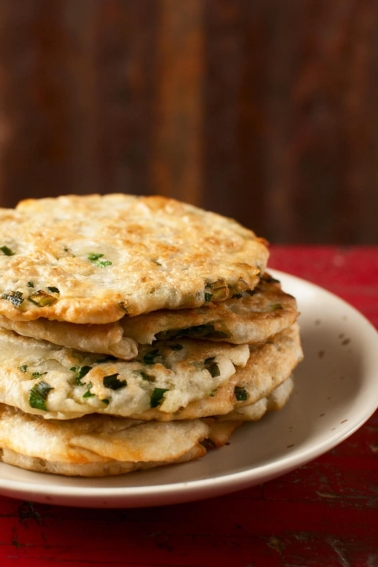
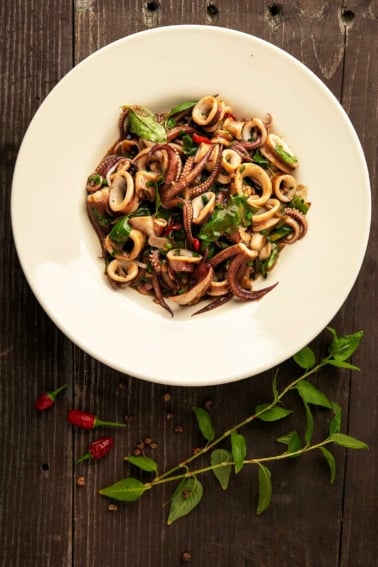
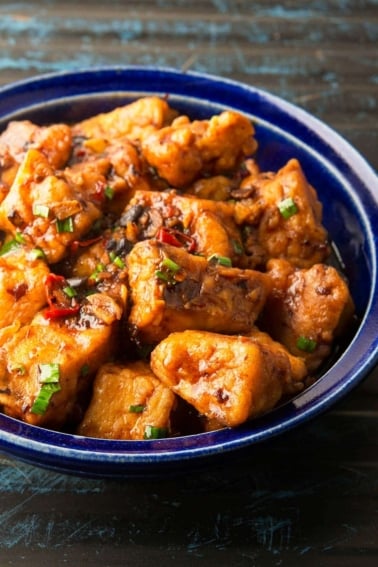
Our local East Bay (Fremont) chinese Bistro served me wakame salad – and every time I chow on it. Our Sprouts pulled out, and now the Korean Mega Mart franchise (Aldi version) came in with Juka seaweed salad (Korean wakame). Noticed that you didn’t mention iodine in the seaweed (for thyroid fitness and immunity health).
In this Juka that there are small flat weeds with little seeds along its length – not sure if this isn’t eel grass !
You might want to consider jellyfish slices. It is said to help with brain health – proteins and gels as a (said) Aisan supplemental product for brain health and degeneration. Just look for the fully sandy beach washed remains, no red stringer strands and get it fresh !
Growing up on the WA and OR coast, and all of the bull kelp washing up (whips and leaves), one can fully dry the leaf, then crumble and powder, or blender (for a seaweed powder additive), and the whips, dried, blended for a seaweed gel.
Just learned that carageenan gel (in almost all food products) is red seaweed gel. Bull kelp (et al) is the Agar Agar gel used in thickening soups or growing medical samples (or mushrooms) in a lab.
People should be eating more seaweed with its proper iodine concentration and sea salts. PROPER sea salt consumption has 1500+ chemical combinations for increased enzymatic processes in the body.
Roasted nori anyone, ? -with olive oil and sea salt…, addictive (completely)
Collecting seaweeds, this looks like a good use of small children at the beach!
Archibald Menzies sure got around.
I discovered seaweed salad only recently (and I’m no youngster) and as you did at a sushi restaurant. Loved it. Or more accurately, liked it and then factoring in how healthy it is – loved it. I have since purchased dried wakame seaweed and made perfectly adequate seaweed salad but dissimilar from the restaurant version in that mine has a flat noodle shape and mouth feel whereas the restaurant version was “ramen-noodle-like”. How oh how can I duplicate that wonderful version?
Thanks Hank!
Love your work.
I’ve got the feeling we have the same seaweeds here on the Adelaide coast, South Australia. I’ll have to have an excursion myself. Samphire is out there for sure!!
PS: Have you cooked with kangaroo? From memory, some US markets have it.
Peta
Peta: I have eaten it. ‘Roo is a lot like venison to me…
Hi Hank
,Have you got any tips for drying? Do I need to do
anything besides lay it in the sun?
I had a bag stashed from a girlfriend (Wailaki), but she was kinda secretive about how she made it. It was better than potato chips for watching TV.
Thanks
Dick
Dick: I generally lay it out in the hot shade of a Sacramento summer. But a dehydrator helps.
I made this recipe and really enjoyed it. Simple and to the point. If you’re looking for more bells and whistles – this may not be it, but if you’re a beginner – this fits the bill.
Well I’m so excited to find this site. Hank I’ve been walking over by and on this Beautiful seaweed not realizing it’s a fine veggie free and delish! I’m going to try the salad recipe asap. I live on Peconic Bay eastern L.I. And walk the beach everyday! I have used the clams, bay water and seaweed in my homemade clam chowder and it was awesome! To be able to cook and eat this veggie will be so kool back to Mother Nature!!! Attainable sustainable eats how fun!
I’ll watch for your emails and I’m gonna get your books.
Thanks for the info
Mary
There are indeed two seaweeds you should avoid, they are in the Desmarestia genus, specifically Desmarestia aculeata and Desmarestia ligulata on the pacific west coast. They produce and store sulfuric acid. When exposed to air they release the acid and “melt” all surrounding seaweeds. It is therefore a good idea to avoid these species for the sake of your other collected seaweeds and for the sake of your stomach.
Anna: you are indeed correct!
This is great! I’d really love to get into this! I live out in Brooklyn so I’d have to travel out to LI, CT, RI or MA. I’m very interested in learning these skills.
This is an awesome post. I have been wanting to harvest seaweed and eat it for a long time. I am obsessed with seaweed! I am an artist and I make molds of seaweed and pour bronze seaweed and make ceramic seaweed! I can’t wait to make some seaweed salad… and I am also looking forward to pickling some. Thanks.
Sweta: Yep, there is one I know of Desmerestia ligulata. It is flat and frondy and brown. It’s acrid, and McConnaughey’s book suggests extracting an acid for pickling from it.
Vikki: I am not sure, but I reckon it would be out near the mouth of the Sound.
Johanna: Ice plant is actually edible, if unremarkable. But Salicornia is definitely not ice plant.
I was standing on some only yesterday, thought you’d have a post, couldn’t get online on my phone, and now I see you’ve just posted this. LOL
wow–this is what i always wanted to know about–thanks for the reassurance on the seaweeds and the recipe! really great info!
question: on your Salicornia post that you refer to above, the top photo shows the Salicornia in a bed of what looks like ”ice plant” (what i have heard is an invasive succulent)–are these one and the same or is the ”ice plant” to be avoided..?
Seaweed salad is new to me. But it looks very delicious. Gotta give it a try.
Thanks for posting this! Seaweed salad is almost more preferable to me than traditional American salads for some reason. I live on Puget Sound. Do you think the seaweed would be safe to eat?
While the great majority of North American seaweeds are indeed nontoxic, I remember learning some time ago that, in the PNW at least, there are 2 species of seaweed you shouldn’t eat, because they are very high in some sort of acid and will cause a terrible stomach ache. Unfortunately I can’t remember the species name, I just remember what they look like — one is pretty finely branching in a fan-like pattern while the other is broad and flat. In addition you can bruise the seaweed a little, and if it starts to turn white (reacting with its acid) then its one of the bad ones. This knowledge did come via word of mouth so its entirely possible its inaccurate — what do you think?